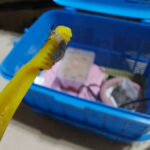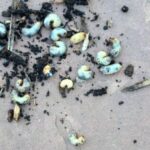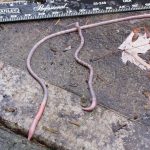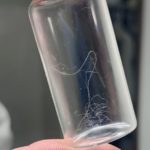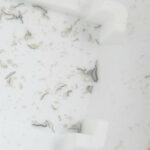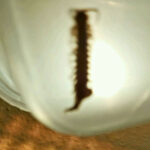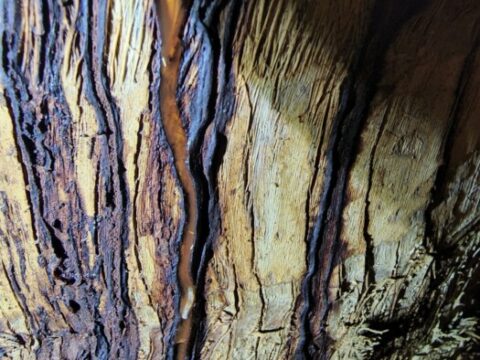
“Saw this on my walk with my two doggies in the woods in Hevingham, Norfolk today, and am wondering what kind of creepy crawlie it is”, writes this reader regarding the segmented, dark green creature pictured below. “When I attempted a closer look it appeared to play dead!” Firstly, this is an excellent photo! The lighting is brilliant, and the details are crisp and clear, which makes it all that much easier for us to try and identify the critter. Secondly, we have to acknowledge what a strange-looking creature this is. The segmented body is very caterpillar-like, but the bulbous, bordering-on-giant, head is really odd.
Based on the excellent photo, we think our reader found a diving beetle larva, otherwise known as a diving beetle nymph. These creatures are aquatic, but the larvae can walk on land when searching for a new body of water. The adult beetles are peculiar-looking creatures, and do not look like the ‘typical’ beetle. Their heads sort of blend into their ovate body, and they have but two legs jutting out from their sides at their rear, and no other discernible appendages; typically, beetles have six legs! Despite being marine insects, neither diving beetles nor their larvae can breathe underwater. Beetles store oxygen in bubbles underneath their wings, while larvae have a snorkel-like appendage that juts from one end of its body, and they stick this up out of the water to breathe.
The adult beetles are predators, and will eat invertebrates in the water. According to Australian Museum’s “webpage on the diving beetle“, they will even eat prey that is bigger than them, like tadpoles and fish, by “tear[ing” them “into smaller pieces”. What’s funny is that frogs and fish also like to eat diving beetles. The larvae are also predators, but the way they eat their prey is different, but no less gruesome. They inject their targets with digestive fluids to essentially melt their insides, which they then suck out. This reminds us of the hammerhead flatworm, another creature which is able to dissolve their prey and drink them up using a straw-like appendage. Of course, neither the diving beetle larva or the hammerhead flatworm can dissolve bigger prey like humans or dogs, but this fluid could cause an allergic reaction, so we do suggest avoiding physical contact.
To conclude, we think our reader found a diving beetle nymph. These creatures are not harmful to humans or dogs, so he needs not worry about that. We hope this helps, and we wish our reader the very best!
All About Worms is always free, always reader-supported. Your tips via CashApp, Venmo, or Paypal are appreciated! Receipts will come from ISIPP Publishing.
You might also find these guys interesting!






